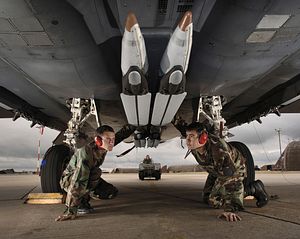The U.S. State Department has approved the possible sale of nearly 3,000 GBU-39/B Small Diameter Bombs and associated equipment, training, and support to Australia, according to a Defense Security Cooperation Agency (DSCA) news release. The sale is still subject to approval by U.S. Congress before it can proceed.
The estimated $386 million weapons deal includes up to 2,950 GBU-39/B Small Diameter Bombs Increment I (SDB I) and up to 50 guided test vehicles. The sale also includes containers, weapons system support equipment, support and test equipment, training equipment, and spare and repair parts, as well as overall logistical support.
Addressing the geopolitical dimension of the sale, DSCA states:
Australia is one of our most important allies in the Western Pacific. The strategic location of this political and economic power contributes significantly to ensuring peace and economic stability in the region. This proposed sale will contribute to the foreign policy and national security of the United States by helping to improve the security of a major contributor to political stability, security, and economic development in the Pacific region and globally.
The SDB I is a precision-guided 113-kilogram (250-pound) glide bomb equipped with a 93-kg (206 lb) warhead used for close-air support missions. It is not designed to attack moving targets. The SDB I has a range of approximately 60 nautical miles (110 kilometers). The small size of the weapon, in comparison to other bombs, allows combat aircraft to carry more SDB I and consequently increase the number of targets that can be engaged during a sortie. The bomb can be internally integrated into the weapons bay of the F-35.
“The sale of SDB I supports and complements the on-going sale of the F-35 to the Royal Australian Air Force (RAAF). This capability will strengthen combined operations and increase interoperability between the U.S. Air Force and the RAAF. Australia will have no difficulty absorbing this equipment into its armed forces,” the news release notes. Australia is planning to acquire total of 72 F-35A Joint Strike Fighter aircraft, at a cost of around A$98 million ($70 million) per plane. (The RAAF’s F-35A Joint Strike Fighter aircraft are slated to reach full operating capability in 2023.)
As I reported last year (See: “Oops: US Close-Air Support Bomb Doesn’t Fit on the F-35”), the F-35B variant had difficulties fitting the SDB II, an upgraded variant of the SDB I, into its truncated weapons bay without modifications. (The A and C variants of the F-35 feature larger weapons bays.) The entire fleet of F-35 will not receive the software required to operate the SDB II until at least 2022.

































